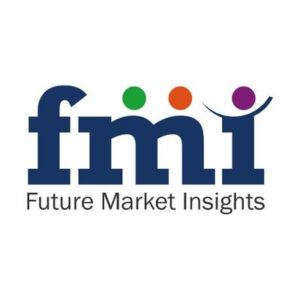Introduction
The non-woven fabrics market has witnessed remarkable growth over the years, revolutionizing several industries with its versatile applications and eco-friendly nature. These fabrics have become an essential component in sectors ranging from healthcare to automotive and beyond. This article delves into the diverse landscape of the non-woven fabrics market, its transformative impact, and its journey toward a sustainable future.
Non-Woven Fabrics Market: A Paradigm Shift
Non-woven fabrics, unlike traditional textiles, are created from fibers bonded together through mechanical, thermal, or chemical processes, eliminating the need for weaving or knitting. This innovative approach grants non-wovens unique properties such as durability, flexibility, liquid repellency, and flame resistance. These qualities have made non-woven fabrics indispensable across various sectors.
Anticipated to achieve remarkable progress, the non-woven fabrics market is projected to achieve a value of US$ 82,345.9 million by 2032, showcasing significant growth from its 2022 valuation of US$ 41,892.2 million. This upward trajectory is driven by a robust compound annual growth rate (CAGR) of 7.0% throughout the forecast period.
Get our Sample Report to discover how recent industry developments, like @ https://www.futuremarketinsights.com/reports/sample/rep-gb-4012
Applications in Healthcare and Hygiene
Non-woven fabrics have significantly influenced the healthcare and hygiene industries. Medical gowns, masks, wound dressings, and surgical drapes made from these fabrics offer superior infection control, breathability, and comfort. Their ability to be sterilized without compromising structural integrity has made them a cornerstone of medical practices worldwide.
Non-Woven Fabrics in Automotive Advancements
The automotive sector has embraced non-woven fabrics for various applications. From enhancing interior comfort through noise reduction and insulation to improving air and fuel filtration systems, these fabrics contribute to a more enjoyable and efficient driving experience. Their lightweight nature also aids in reducing vehicle weight and increasing fuel efficiency.
“Rising adoption in diverse industries such as hygiene, personal care, automotive, filtration, etc., promotes the global growth of the non-woven fabrics market over the forecast period,” says an FMI analyst.
Key Takeaways:
- High demand from various industry verticals strengthens the market prospects for non-woven fabrics.
- Volatility and high costs of raw materials may stunt the target market growth.
- The non-woven fabric market in North America accounts for 15% of the global market share.
- Europe’s non-woven fabric market holds 30% of the total market share.
- Start-ups in this market are keen on developing additional product properties to boost the adoption rate of non-woven fabrics.
Competitive Landscape
- E.I. du Pont de Nemours & Co,
- Ahlstrom Corporation,
- Avintiv, Inc.,
- Kimberly-Clark Corporation,
- P.H. Glatfelter Co,
- Freudenberg SE,
- Suominen Corporation,
- Toray Industries Inc.,
- Albarrie, and
- others
are some of the major players in the non-woven fabrics market profiled in the full version of the report.
Leading market players are focusing on utilizing novel and innovative techniques to enhance product quality and durability. These firms are interested in developing new product lines and expanding their production capacities to strengthen their market position.
Innovations Driving the Non-Woven Fabrics Market
Non-Woven Fabrics Market has witnessed a surge in innovations that have expanded its potential applications. These innovations include:
- Nano-technology Integration: Incorporating nanoparticles into non-woven fabrics has led to enhanced functionalities like antimicrobial properties, UV resistance, and advanced filtration.
- Electrospinning Techniques: Electrospinning has enabled the production of ultra-fine fibers, paving the way for non-woven fabrics with improved strength, breathability, and surface area.
- Sustainable Materials: The industry has embraced eco-friendly materials like biodegradable fibers and recycled plastics, addressing environmental concerns and promoting sustainability.
- Smart Non-Woven Fabrics: Integration of sensors and electronics into non-woven fabrics has resulted in “smart” textiles used in wearable technology, healthcare monitoring, and automotive applications.
Regional Analysis
Established eCommerce Channels in North America to Uphold the Adoption Trends
It is projected that North America will hold a significant share in the non-woven fabrics market. Currently, North America is holding 15% of the total non-woven fabrics market share.
Owing to the rapid economic development of this region and rising disposable income, there is a rising domestic demand for hygiene products. In addition to this, the online sales channel is a prominent part of the region’s economy, which generates high revenue for the market. All-in-all, North America is likely to have steady non-woven fabrics market growth in the upcoming years.
Ready to Learn About Our Approach? Explore Our Methodology: https://www.futuremarketinsights.com/request-report-methodology/rep-gb-4012
Key Market Segments in the Non-Woven Fabrics Market
By Polymer Type:
- Polypropylene (PP)
- Polyethylene (PE)
- Polyethylene terephthalate (PET)
- Wood pulp
- Rayon
- Others
By Function:
- Disposables
- Durables
By Application:
- Hygiene
- Medical
- Filtration
- Automotive
- Building & construction
- Others
By Technology:
- Spunbond
- Wet Laid
- Dry Laid
- Air Laid
By Region:
- North America
- Latin America
- Asia Pacific
- Middle East and Africa
- Europe
About Future Market Insights (FMI)
Future Market Insights, Inc. (ESOMAR certified, recipient of the Stevie Award, and a member of the Greater New York Chamber of Commerce) offers profound insights into the driving factors that are boosting demand in the market. FMI stands as the leading global provider of market intelligence, advisory services, consulting, and events for the Packaging, Food and Beverage, Consumer, Technology, Healthcare, Industrial, and Chemicals markets. With a vast team of over 5000 analysts worldwide, FMI provides global, regional, and local expertise on diverse domains and industry trends across more than 110 countries.
Contact Us:
Future Market Insights Inc.
Christiana Corporate, 200 Continental Drive,
Suite 401, Newark, Delaware – 19713, USA
T: +1-845-579-5705
For Sales Enquiries: sales@futuremarketinsights.com
Website: https://www.futuremarketinsights.com
LinkedIn| Twitter| Blogs | YouTube

